There will be no deception or provocative introduction here. The photos will tell the story and history will be the evidence. I’m fully aware it is anecdote, but let’s live with that. Squatting on the toes is missing from most trainee’s “go-to” bag of tricks. It was a part of the basics of most of the old York courses and old time strongmen.
It was more common in the forties, fifties and even sixties, but the lower loads, due to leverage disadvantage made the standard squat more attractive. We know how that goes. Squatting with boards under the heels like Arnold and Dave Draper did slowly moved to flat footed squatting, Texas style squat and today’s power squat with a monolift. Moving 1000 pounds is possible through better training, but almost certainly better drugs, better training apparatus and support garments that challenge the boundaries of modern petrochemical technology. It’s also from a change in style to optimize, leverage, distance, physics and the judges rulebook. 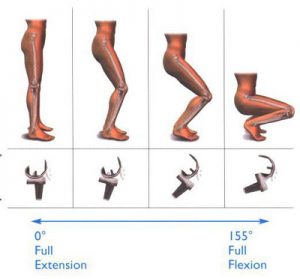
So what are the down sides to squatting on the toes? Primarily fear of knee injury. There is a fear about knees not moving past the toes during squatting. Apparently it will allow dogs and cats to live together and Third World Debt to increase. I think we forgot to tell this particular athlete about that. 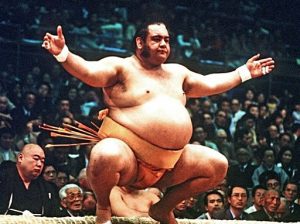
Certainly if you have a pre-existing knee injury only your orthopedic surgeon can give your their opinion,.. based on anecdote, as to whether your knees are up to the rigors of squatting on your toes. I do know some uniformed surgeons who have told patients to NEVER squat. I find this perplexing since having a bowel movement for the rest of your life would be difficult and I can’t imagine that many creative options.
A lack of integrity of a knee joint due to torn or removed connective/supportive tissue might warrant a more conservative approach to squatting on the toes. Having untrained, weak, legs supporting an obese torso is not the most fertile ground for starting a rigorous, “squatting on toes” program. Certainly exercise that offer better leverage, less balance and an aggressive fat reduction program might be a better course of action.
That being said, the squat on the toes is “knee intensive vs hip intensive”. The rotation around the knees is more profound allowing this joint to be stimulated through a fuller range of motion. There is a “Squat On The Toes” in yoga, so it’s been historically around forever. [Appeal To Antiquity]. Some old time tough guys used it as a staple of their program. Ever hear of Gama the wrestler?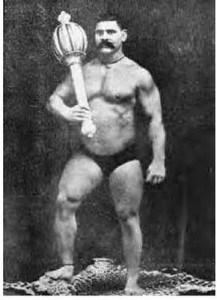
” He [Gama] is said to have regularly done three thousand squats and fifteen hundred push-ups and run one mile every day with a 120 pound stone ring around his neck”.
How about George Hackenschmidt? One of the greatest wrestlers and strongmen in history? Back in 1902 he did 550 reps with 110lbs in the lift that became his trademark. 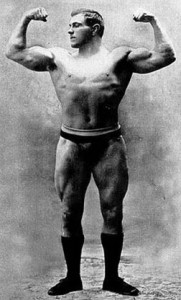
So we have two old tough guys who could tolerate such training. They are not always the best examples because their genetic gifts and work ethic may be way beyond us mere mortals. Remember, we are dealing with the knee joint and we have to walk on these legs the rest of our life. With a bit of Googling and thinking, I came up with two groups of athletes that squat on their toes A LOT. That would be baseball players and ballerinas. Realize that since both passions require performance that is beyond what is considered healthy, the injury rate will be higher.
Having had much personal experience with ballet over thirty years, including Baryshnikov, Nureyev, Godunov, etc., the most common injury is ankles and feet. Knee injuries occur for sure, but NOT at the frequency one would expect from so much volume of effort and time on the toes. 
Baseball catchers have a rash of injuries. Their left hands [primarily] are destroyed from catching fastballs. Their shoulders from throwing, their total body from getting hit by balls and of course their knees. Catchers, when they reach the physical limit of their knees will move positions that are more knee sparing, like first base. [Johnny Bench for example]. The thought process is that the squat or what ball players call a “stoop”, is not the problem as much as the shearing force of moving and throwing in that position. To quote a big league catcher-
“I couldn’t even get into a crouch now if I wanted to,” said San Francisco Giants Manager Bruce Bochy, who is 57 and was a catcher in the major leagues for nine years. “And if I did somehow get into it, I don’t think I could get out of it.”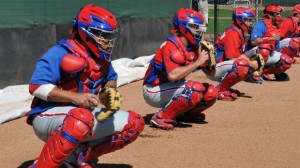
Bochy said that when he played, his thighs grew so large he could not buy trousers off the shelf; his pants had to be tailored to accommodate his massive upper legs.
Right away we have to separate training for fitness and competition. No one ever said competition was about health. It’s about winning.
So there are various styles of “Squatting on the Toes”. Some may be better than others or more suited to individual needs or experience. We don’t live in an either/or, black and white world where we avoid the middle ground. Let’s use photos to illustrate.
As you can see there is no shortage of variety and certainly quite a history to squatting on the toes. Realistically there are some downsides.- If you do it,.. or for that matter ANY exercise wrong, you increase the risk of injury.
- Due to leverage disadvantage, there will be less weight moved. Some consider lighter exercises a waste of time.
- Balance is surely an issue in the early stages. Many trainers/coaches will state that doing ‘balance stunts’ like standing on Swiss Balls and kettlebell handles is stupid and dangerous. [I agree]. They state that one should move towards stability like moving from standing on Swiss Balls to doing the standard back squat. Well if stability was the reason for the move, why not go all the way to machine training? ALL balance is removed and the ability to apply strength without stabilizing is exploited. This again moves towards focusing on extremes, avoiding middle ground and moralizing exercise into “good” and “bad”.
- Learning anything new is frustrating. The cool part is that improvement comes quickly.
So given the multiple choices of “Squatting on the Toes”, what is the most balanced option? My opinion is the Kettlebell Hack Squat. You can use dumbbells or barbell plates. Please don’t get religious about kettlebells and treat them like teen aged girls treated David Cassidy back in my youth. It’s just a tool. There are several reasons though.
- Kettlebells are commonplace and solid. No rattling plates.
- The single handle forces your hands behind you, with shoulders back and really good posture.
- The low center of gravity keeps the torso upright and can develop the legs with far less load on the spine than conventional squatting.
What is the best way to do the Kettlebell Hack Squat? Well rather than tell you myself, I’ll let others speak so we get a bit of perspective on this.
“The Hack differs from the Hindu Squat in that it lacks momentum or bounce. In fact, the secret to doing safe Hack Squats is maintaining high-tension in the feet, calves, hamstrings, glutes and thighs for the duration–do NOT relax at the bottom, but actually attempt to press the calves hard against the hamstrings. This high-tension effort will pay off richly with rock-solid stability at the bottom, plus great conditioning in the feet, ankles and calves”.
“The Hack SQ, unlike a poor technique SQ with the knees forward, is a leverage drill which means it forces you to use minimal weight. E.g., generally you have to SQ over 300 to Hack a 32kg bell. Which is why it is not hard on a healthy knee. By the same token, the volume is low and we do not have the repetitive wear and tear”.
“Do a hack squat with your feet pretty close together and coming up on your toes. Let the knees track out over the toes. Hold a kb behind you.
Important points: open up the joints, “pull the hip out of the socket”, instead of going down, think of pulling your hips out of the sockets while you pull yourself down into a squat. Let your chest open and pull your shoulders back to let the kb open up your chest a bit. When you can sit on your heels in the bottom, pretend there’s a cable attached to your belly button tilting your pelvis, let this pretend cable pull your hips even further open by tilting the pelvis up”.
Some key points –
- While there are various versions on YouTube, I opt for a position with the feet closer together and toes pointed out at 45 degrees.
- The kettlebell is held at arms length, behind the back and shoulders are drawn back with ‘proud posture’. Keep the shoulders down and away from the ears.
- There should be a normal, not exaggerated curve in your low back. The torso remains vertical. If the need to lean forward overcomes you, face a wall so it will be impossible.
- The knees move forward, tracking past the toes, the heels come off the ground. Focus hard on keeping your balance.
- As stated above, think of creating space between your thighs and hips. Allow the kettlebell to open the chest and maintain tension in the calves.
- In the bottom position, smoothly reverse the direction. You should focus on creating a stretch in the area of the hamstring/buttocks area. This will improve over time when you access more coordination and skill.
- Also PRY the thighs together using your adductor group. This will be easier by placing your feet closer, rather than further apart.
- Maintain a good posture at top and squeeze your quadriceps and glutes. Think of lifting your kneecaps and flexing your glutes hard.
- Repeat within your repetition scheme.
- Barefoot training on a padded surface is superior to wearing shoes. Squatting on the toes not only stimulates thighs and glutes, but the muscles of the calves and feet. Weak feet are a byproduct of spending too much time in shoes and socks.
The repetition scheme originally suggested by Pavel was 5X5. He opted for low volume, low rep, higher tension. I think the idea of low reps can also be exploited with higher sets and compressed time periods for increased hypertrophy and work capacity. Therefore 10 or even 15 sets of 5 reps are certainly viable.
At the further realms we had George Hackenschmidt himself doing 550 reps with 110 lbs. My former father in law trained at Sig Klein’s Gym in NY, NY back in the ’50’s. He watched Steve ‘Hercules’ Reeves, do set after set in the apparatus pictured above with 150 pounds.
Just as a thought to ponder, Bob Hoffman stated that in the “Back Squat on Toes, Frank Shofro, the winner of this year’s junior and senior heavyweight lifting titles, habitually deep knee bends with 400 lbs. while maintaining the on toes position“.
So there it is. The Lost Basic. Not a panacea, not a youth drug and certainly not the next fitness craze, but just another tool that should be pulled out of the box so it doesn’t get rusty. 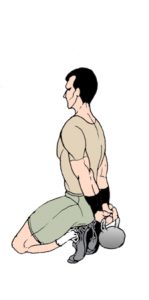

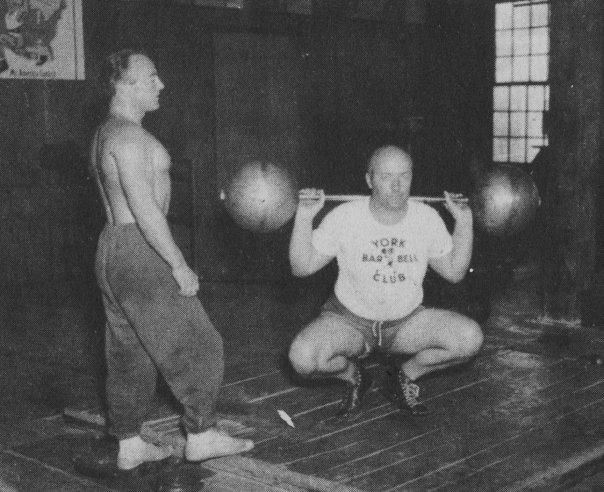
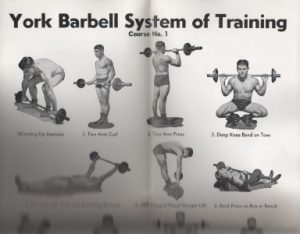
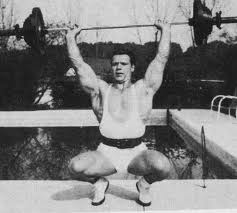
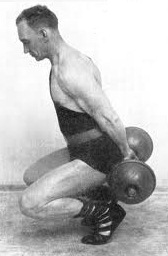
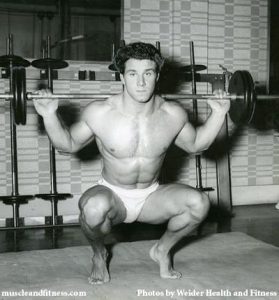
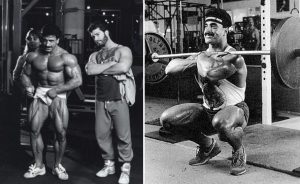
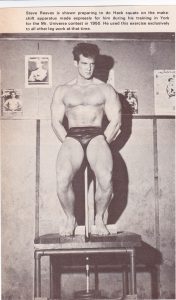
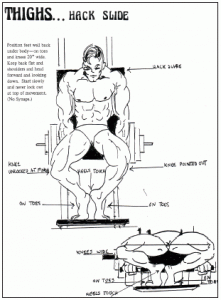
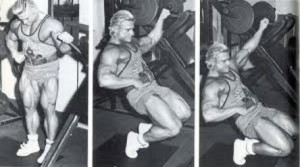
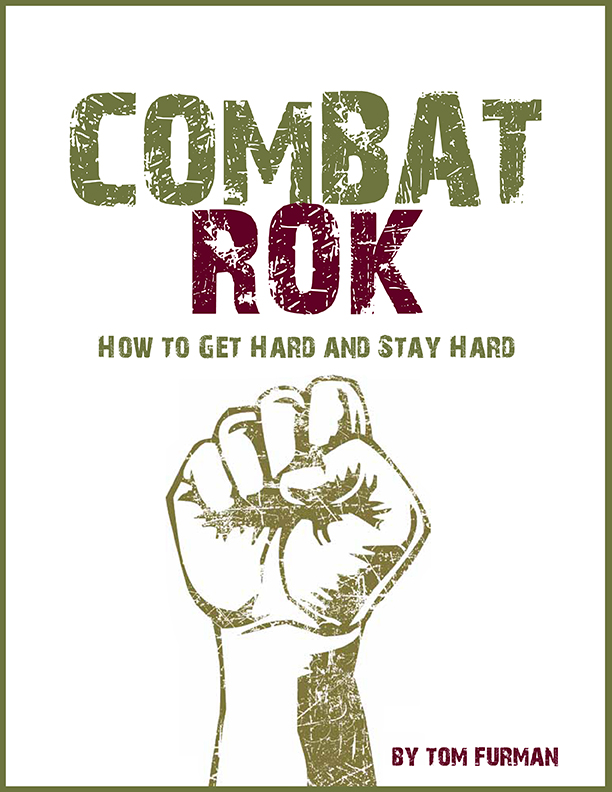
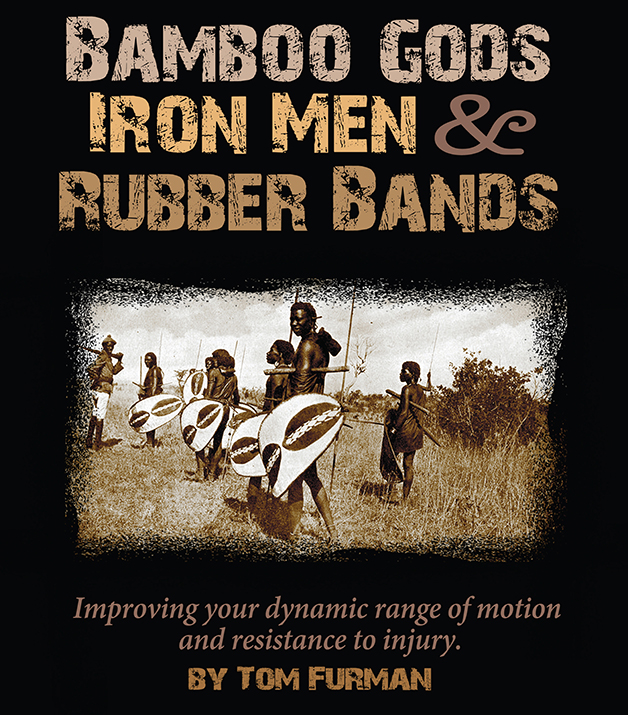
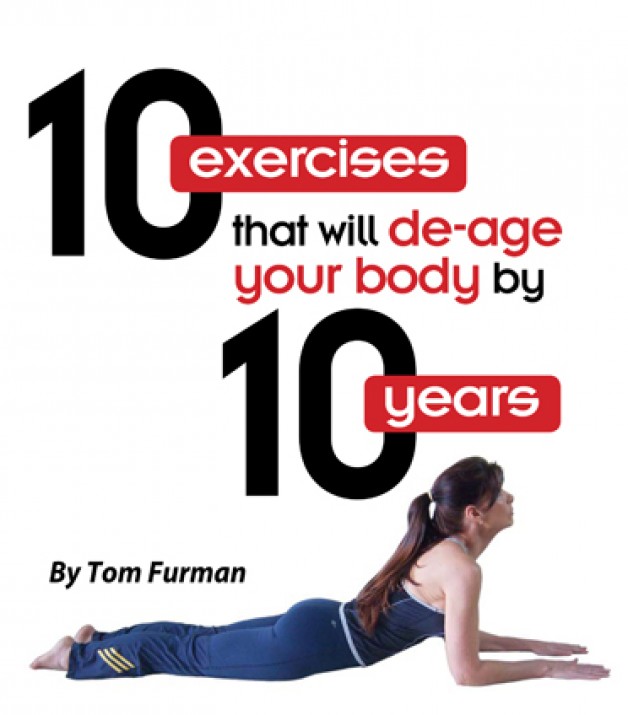







Trackbacks/Pingbacks